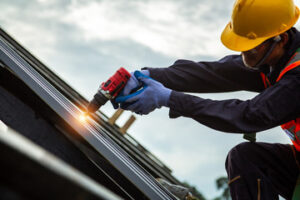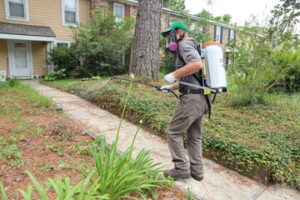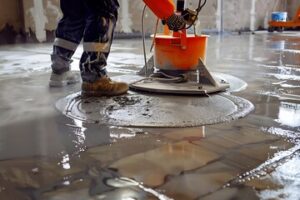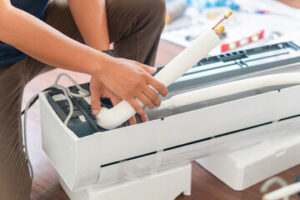Masonry Repair involves repairing brick chimneys, concrete basements, heavy-duty porches, and other structures made of brick and mortar. Repairing cracks, filling gaps, and tuckpointing are some common forms of masonry repair.

Charleston Masonry Repair is targeted fixes that preserve the structural integrity of a building. Addressing minor masonry issues promptly prevents them from turning into expensive and extensive restoration projects.
Masonry is the building material of choice for many homes and buildings, providing a strong, sturdy option that resists weathering. Masonry repairs are important for keeping masonry structures in good condition, preventing damage and ensuring that they continue to function as intended.
Masonry repair can involve a variety of projects, including patching cracks in walls and foundations, fixing damaged bricks or stones, and addressing structural problems like lintel replacement. It can also involve cleaning surfaces and applying protective coatings to prevent further damage.
Choosing the right materials for your masonry repair project is critical to ensure that the repairs you make are long-lasting and durable. Using the best possible materials will help you save money, minimize future maintenance and repair costs, and protect your investment.
There are a number of signs that your masonry structure may need repair, including gaps, cracked bricks, and crumbling mortar. These signs can indicate that there is a problem with the structural integrity of your building, putting its occupants at risk. It is important to have masonry issues addressed promptly by a professional, so that the problems do not worsen over time and result in expensive repairs.
The most common type of masonry repairs involves patching and filling cracks in mortar and bricks. This can include tuckpointing, which is the process of replacing damaged mortar between bricks and stones, as well as caulking, which is the process of sealing joints to keep water and other elements out of the building. These repairs are often done in conjunction with a thorough cleaning and protective application of coatings and waterproofing agents.
Masonry restoration is a more extensive process than repair, and involves repairing or replacing entire sections of the masonry structure. This is typically required when a structure is in poor condition, and can be used to restore historic buildings or rehabilitate commercial masonry. Restoration can be complicated, and requires a professional to assess the work and make accurate recommendations.
Taking care of your masonry structures can help to extend their lifespan and increase the value of your property. Regular masonry repairs and maintenance are essential for protecting your investment, and can help to prevent costly repairs in the future. By identifying and addressing masonry issues before they get out of hand, you can ensure that your brick buildings are safe and secure for years to come.
Glass Repair Film
Glass Repair Film is a self adhesive window film that is designed to be placed on already broken windows in order to make them safe and to stabilise the integrity of the glass (weather proofing) until replacement can take place. It is an ideal alternative to calling out a glazier and board up, which can be expensive, causes irreparable damage to frames, darkens rooms and can attract vandalism like a magnet.
Glass repair film is a polyethylene film with a pressure sensitive adhesive that can be cut to size and applied to the surface of the broken window in seconds, leaving an almost invisible repair. It is an excellent choice for 24 hour work where safety, light or labour issues may prevent the use of permanent materials until the next working day. It is easy to use and requires no tools. It is suitable for any glass, including double glazed units and upvc frames.
Super Glue
A very useful product for fixing broken crockery, fastening certain types of plastics and joining materials together with a strong and steadfast bond, super glue is a type of adhesive also known as cyanoacrylate. There are many different grades of super glues available to suit specific applications and each has its own characteristics.
The most important aspect of any adhesive is its ability to bond quickly and with a high strength, which super glue does very well indeed. The other factor to take into account is its surface compatibility and this is where the various types of super glue differ from one another.
Super glues are designed to react with the moisture in the air and on the surfaces of the materials they are bonding together. This is why it is important to clean the areas you plan to bond together thoroughly. This will ensure the surface is free from dirt, oil and other contaminants that can inhibit adhesion. Wiping the surface with a rag dampened in alcohol can help. Preparing surfaces in this way will also ensure the glue can make direct contact with the material and initiate a stronger bond.
Depending on the grade of super glue you choose, you may be able to choose between liquid or gel forms. The difference between the two is mainly down to viscosity – that is how thick the liquid is (a custard would have a higher viscosity than milk). Liquid super glues tend to be better at penetrating cracks and fractures as they have a lower viscosity and can reach more places.
Both types of super glues are extremely easy to use. They can be spread on the surfaces you plan to bond together with a thin layer. Then simply press the surfaces together and hold them for 30 seconds. You can speed up the process by pointing a fan or blowdryer at the area. Accelerators can also be added to super glues to make them cure even quicker.
When working with super glue, it is always advisable to wear protective gloves and goggles as it will bond skin and eye tissue. If accidental skin or eye bonding occurs, soaking the area in warm water and seeking medical advice should be done immediately.
Epoxy
Masonry is a building material that uses brick, stone and concrete to make walls and structures. These materials are known for their strength and durability, making them ideal for use in industrial and commercial buildings. They also tend to be less expensive than other types of building materials, such as wood. This means that masonry construction can be a great option for businesses that want to save on expenses while still offering their employees and customers the best possible amenities.
Masonry can also resist damage caused by fires, as well as natural disasters like earthquakes and tornadoes. This makes it a good choice for properties in areas with harsh weather conditions. However, a building constructed from masonry materials may need to be repaired due to cracking and chipping. In these cases, it’s important to seek out a reputable masonry repair service that can quickly and efficiently address these issues.
One way to do this is by using epoxy as a masonry repair material. Epoxy is a strong adhesive that can bond to a wide variety of surfaces and materials. This makes it a more versatile solution than other common adhesives, such as polyvinyl acetate glues.
Another benefit of epoxy is its ability to withstand high temperatures. In addition, it’s often waterproof when cured, making it a good choice for repairing leaky pipes and joints in wet areas. Finally, epoxies can withstand chemical exposure, which is a major benefit for facilities that have to deal with chemicals and other potentially hazardous substances.
There are several different kinds of masonry epoxy available on the market. Some are fast-acting and can be used for small repairs, while others have a longer curing time but offer a higher level of strength. In some cases, you can purchase masonry epoxy in the form of putty, which is perfect for making small repairs and requires no mixing or heating. However, it is important to choose an epoxy that has been tested for health and safety concerns.
The results of the tensile and bond tests indicate that the composite mortar based on blast furnace slag (MII) showed the best tensile and bond behavior. This result is consistent with the findings of previous research on composites with mineral additives.








